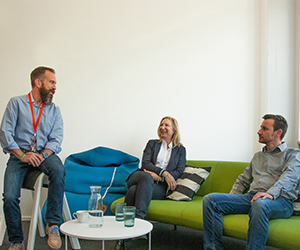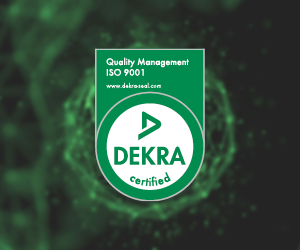
International Day of Families at HENSOLDT Cyber
International Day of Families at HENSOLDT Cyber Interview with Markus Wolf, Sascha Fedderwitz, Emilia Fries We asked some of our colleagues a few questions on

Sebastian Eckl, Senior Software Engineer at HENSOLDT Cyber
This blog post marks the fourth article in a series of six and will explain briefly the content and structure of the TRENTOS® SDK. The SDK contains both the source code of the actual operating system and additional tooling that provides the respective build, test and deployment environment.
The TRENTOS SDK – More than just an operating system
With the TRENTOS SDK, HENSOLDT Cyber provides a complete development environment that equips a developer with all the tools required for building, testing and finally deploying TRENTOS-based systems to the real world. The SDK hereby contains the actual operating system (OS) source code, consisting of seL4®, CAmkES and TRENTOS, but also offers a collection of additional resources designed to make developer’s work easier by increasing efficiency and reducing complexity.
Content of the TRENTOS SDK
Of course, TRENTOS still marks the heart of the SDK. All the essential OS parts described in the previous blog post – the API, the libraries and the standard components – are bundled together with the underlying foundation consisting of the seL4 microkernel and the CAmkES framework. Nevertheless, for being able to build an actual TRENTOS system image out of the sources and to deploy it to a specific hardware platform, further resources are required.
In order to understand the overall idea of TRENTOS and for getting to know how to develop TRENTOS-based systems in general, the SDK includes an extensive documentation in form of the TRENTOS Handbook. All necessary aspects of the OS, like the API and the provided standard components, are explained in detail. To provide some kind of starting point for the development of custom applications, the SDK also includes a set of demo systems. These systems highlight specific parts of TRENTOS, starting from a very basic hello world application to the comprehensive IoT demo, which makes use of almost all TRENTOS components. Have a look at these systems before starting with your own TRENTOS idea.
Besides code and documentation, the SDK also provides all the tools required to build and run a custom TRENTOS-based system. In order to provide a stable development foundation, the SDK offers a suitable Docker-based working environment, containing a Linux system that provides all the tools required for development (e.g. a compiler toolchain) and testing (e.g. QEMU). Accompanying scripts also ease the build and test process, allowing a developer to create a complete, bootable TRENTOS system image. Nevertheless, in order to deploy this image to a physical hardware platform like the Raspberry Pi 3 B+, further resources (e.g. firmware and bootloader files) are required. The SDK already considers these dependencies and therefore includes the respective elements.
From theory to practice
Of course, dealing with the TRENTOS SDK in theory alone won’t be sufficient for becoming a skilled TRENTOS developer. Getting your hands on the actual source code and developing a first custom application is therefore strongly recommended. So, stay tuned for the concluding two blog posts, which will offer an interactive video tutorial that explains the structure of the SDK in more detail and demonstrates how to build and run your first secure TRENTOS system.

International Day of Families at HENSOLDT Cyber Interview with Markus Wolf, Sascha Fedderwitz, Emilia Fries We asked some of our colleagues a few questions on

How to mitigate hardware attacks? Written by Maja Malenko, Hardware Researcher at HENSOLDT Cyber In the final blog post of our hardware security trilogy, we

Is Hardware Reverse Engineering a Real Threat? Written by Maja Malenko, Hardware Researcher at HENSOLDT Cyber Today we are continuing the story of hardware security

Hardware Security: HENSOLDT Cyber’s MITHRIL Project Written by Maja Malenko, Hardware Researcher at HENSOLDT Cyber Creating secure hardware is a challenging task, especially in times

Successful ISO 9001:2015 certification We are pleased to announce that after eight months of hard work, preparation, and intensive teamwork, HENSOLDT Cyber has certified its

Hello Secure World – How to build and run your first secure TRENTOS® system Building on our first video session in which we took a
LEGAL:
CONTACT US:
FOLLOW US ON:
HEADQUARTER POSTAL ADDRESS:
OUR OFFICE IS LOCATED HERE: